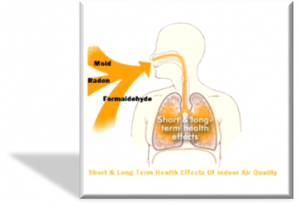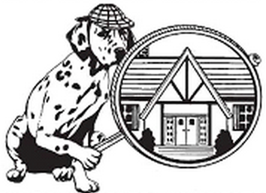Sick Building Syndrome & Sick House Syndrome
The term "sick building syndrome" (SBS) or "sick house syndrome" describes when individuals living in a particular home or occupying a certain building experience health concerns associated with time spent in a building, but can't identify a specific illness they're suffering from.
Indoor Air Quality (IAQ)
Most of the sick building syndrome is related to poor indoor air quality. Indoor air quality (IAQ) is a term referring to the air quality within and around buildings and structures, especially as it relates to the health and comfort of building occupants. IAQ can be affected by microbial contaminants like mold, gases like carbon monoxide and radon, or anything in the air that can induce adverse health conditions. As we spend more time indoors, indoor air is becoming an increasingly more concerning health hazard than outdoor air.
 Indoor pollution sources that release gases or particles into the air are the primary cause of indoor air quality problems in homes. Inadequate ventilation can increase indoor pollutant levels by not bringing in enough outdoor air to dilute emissions from indoor sources and by not carrying indoor air pollutants out of the home. High temperature and humidity levels can also increase concentrations of some pollutants.
Indoor pollution sources that release gases or particles into the air are the primary cause of indoor air quality problems in homes. Inadequate ventilation can increase indoor pollutant levels by not bringing in enough outdoor air to dilute emissions from indoor sources and by not carrying indoor air pollutants out of the home. High temperature and humidity levels can also increase concentrations of some pollutants.
Dutch's Home and Mold Inspection can help in the determination of IAQ with a collection of samples on building surfaces, an assessment of air flow inside buildings and other tools to inspect your building's indoor air quality.
Contact us for an indoor air quality test or consultation today.
